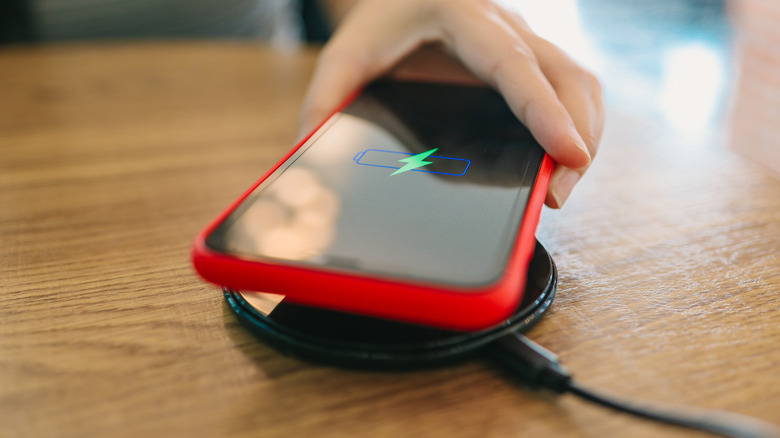
Dacharlie/Getty Images
Most modern smartphones have wireless charging capabilities. Though the technology seemed novel in its infancy, we’ve long since taken for granted that we can drop our phones onto plastic pucks and pick them up later, fully charged. The technology behind this minor miracle is called inductive charging, and it works because both your phone and the wireless charger have a set of inductive coils built into them. When the coils are aligned, they help create an electromagnetic field that transfers energy. But the convenience of even the best wireless chargers comes with some serious drawbacks for both you and the planet.
Today, wireless chargers can be found in cars, coffee shops, and even built directly into some furniture. However, the technology has limitations that might make you think twice before dropping your phone onto a charging puck.
If you regularly use both wired and wireless charging, you may have noticed that wireless charging is slower than plugging in a cable. Beyond being inconvenient, it may be contributing to larger environmental issues too.
So, is it time to swear off wireless charging entirely, or can you plop your phone onto a Qi pad with reckless abandon? Here’s how the pros and cons of wireless charging could impact your smartphone’s battery.
Wireless charging is inefficient
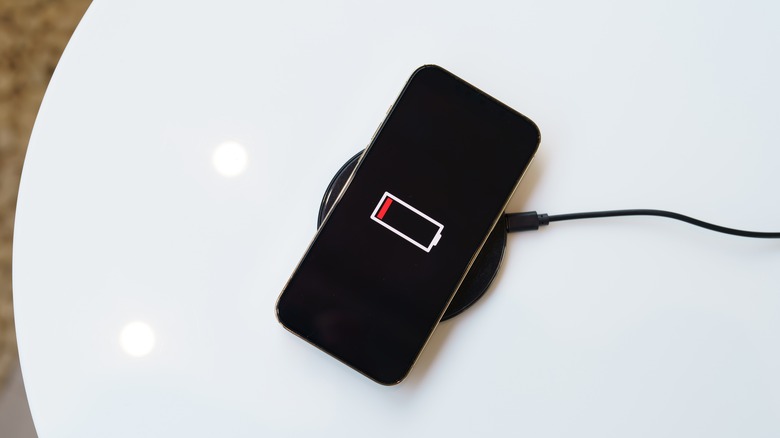
Lee Charlie/Shutterstock
The reason why wireless charging wastes energy comes down to the physics of energy efficiency. In this case, efficiency refers to the amount of energy lost when transferring it through a system. To illustrate this, imagine that someone starts dumping a large jar of coins into your hands. There are $100 worth of coins in the jar, but your hands can only hold $10 worth before they start spilling onto the ground. We would say this transfer of coins had an efficiency of 10%.
When you charge your phone via a cable, you’re directly connecting pieces of metal tightly together, creating a stable channel for electricity to flow through with a high level of efficiency. However, when you place your phone on a charging pad to charge wirelessly, there are bits of plastic or glass between the two inductive coils, creating plenty of area for energy to escape. The best estimates indicate that wireless charging is only 80% efficient at its best, while in practice about half of the energy generated in the course of wireless charging never makes it to your battery. That’s incredibly inefficient.
But why does this matter? After all, the phone does charge, albeit more slowly than a wired connection, so who cares whether some energy escapes? Well, wireless charging also creates heat, which could harm your battery over time. If you replace the battery or the whole phone, it costs you money while the lost energy and e-waste causes environmental harm.
Wireless charging is worse for your battery
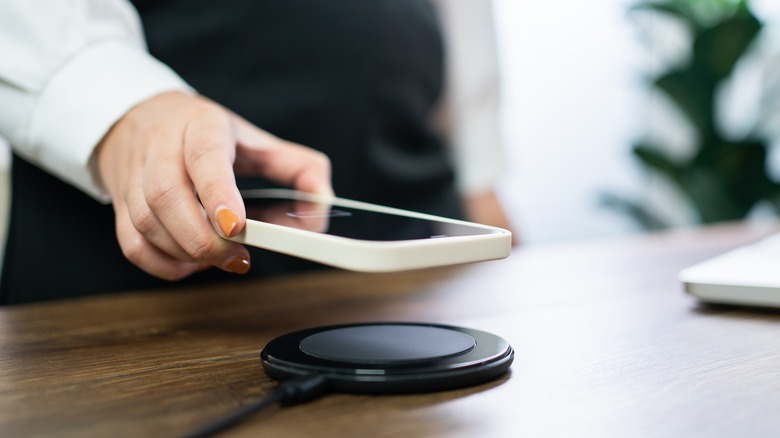
Lee Charlie/Shutterstock
The thing about the lithium ion batteries that sit in so many of our smartphones is that they’re quite sensitive. Li-ion cells only have so many charge cycles in them before they go kaput, so even normal use of your phone is technically bad for the battery. But some things can make a battery’s lifespan even shorter, and there’s evidence that wireless charging is a bad idea if you want to maximize your battery’s lifespan.
iFixit did some tests and found that, when not precisely aligned on a charging pad, wireless charging can consume up to a whopping 104 percent more energy than wired charging on the same phone. While standards like MagSafe and Qi2, which use a ring of magnets to ensure proper alignment between wireless charging coils, the technology simply cannot reach the same level of efficiency as a wired connection.
So, if wireless is your go-to charging method, you’ll likely end up needing to replace your phone’s battery earlier than if you had exclusively charged it with the cable, costing you real money down the line.
Wireless charging is worse for the environment
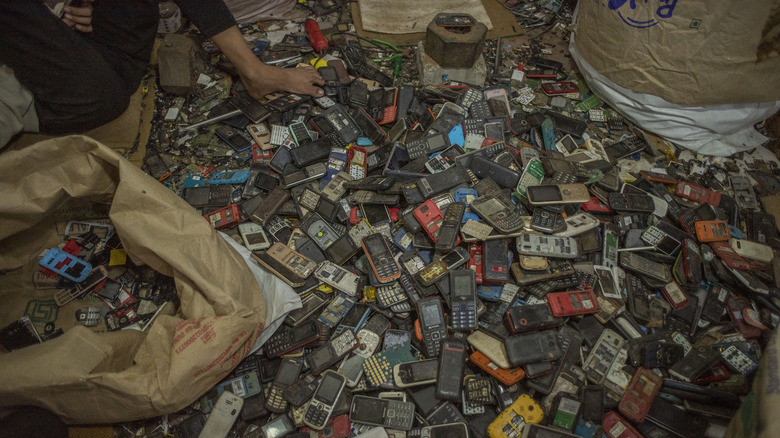
Yawar Nazir/Getty Images
As we covered above, wireless charging is inefficient, and that inefficiency both wastes power and creates unnecessary stress on your battery that can lead it to fail earlier than it might otherwise. There is, of course, a personal cost to that. Battery replacements aren’t cheap. But most people will instead buy a whole new phone. According to The New York Times, a mere 30% of people with a partly malfunctioning phone (such as a poorly performing battery) said they had considered repairing it rather than buying a new one.
The buildup of discarded electronic devices and components is known as e-waste, and it’s a massive problem. When not properly recycled, toxic chemicals from discarded batteries and other components leech into the environment. Since they’re not biodegradable, these toxins build up in soil, air, water, plants, animals, and even people, causing potentially severe health issues. Moreover, batteries and some other smartphone components can be recycled, reducing dependence on harmful mining practices for cobalt and other metals necessary to produce electronics
Aside from physical waste, the wasted energy from the inefficiency of wireless charging adds up. Calculations done by iFixit technical writer Arthur Shi found that it would take 73 coal power plants running for a day to charge the 3.5 billion smartphone batteries wirelessly, with even more consumption if those phones are misaligned on the chargers.
Conclusion: use wireless charging sparingly
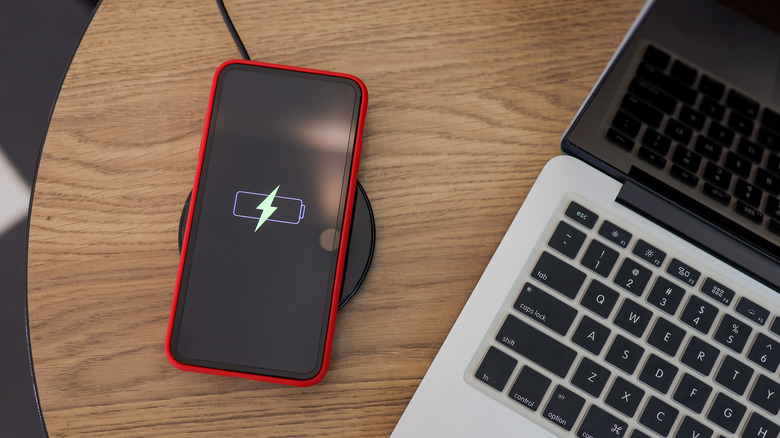
Dacharlie/Getty Images
Learning about all the issues with wireless charging described above, you might feel tempted to throw your wireless chargers out, but please don’t. First of all, that would only contribute further to the e-waste problem, and second, wireless charging still has some uses. For example, if you’re in a public place and must use a public USB charger, a wireless charging pad can keep you safe from any malware attacks that might try to deploy over that cabled connection. And high-quality wireless chargers made to work with your phone’s specifications can have better alignment and smart power delivery to reduce inefficiency.
There are some other ways you can make wireless charging less problematic for your devices and the environment. For example, a solar-powered wireless charger will solve the issue of wasted energy, since you’re not drawing on fossil fuel sources. But the best advice is simply to practice good charging hygiene. Use wired charging as often as possible.